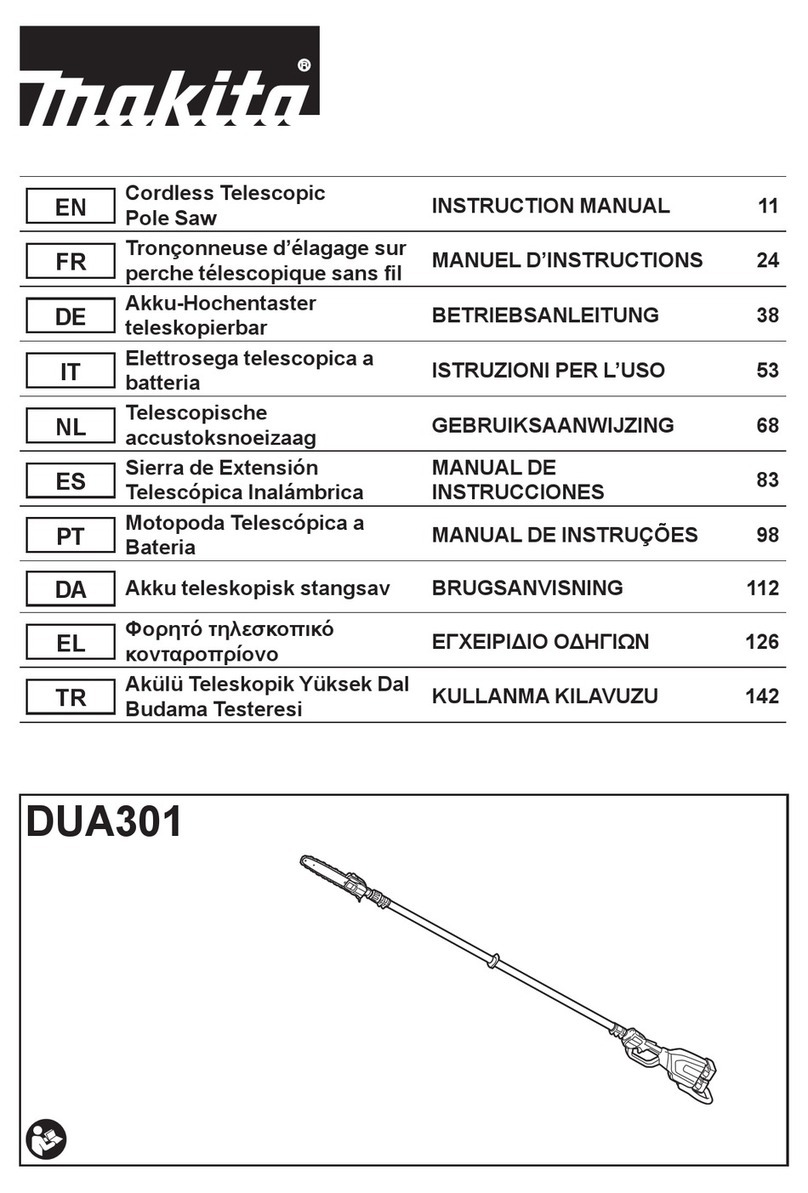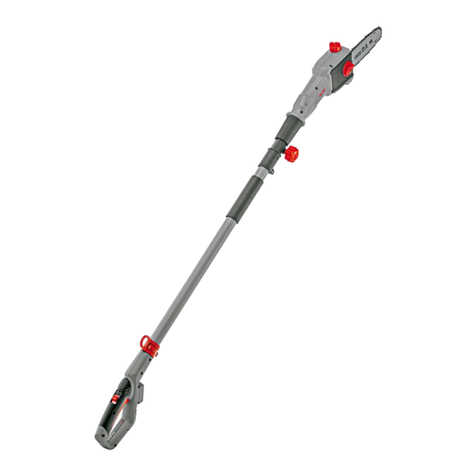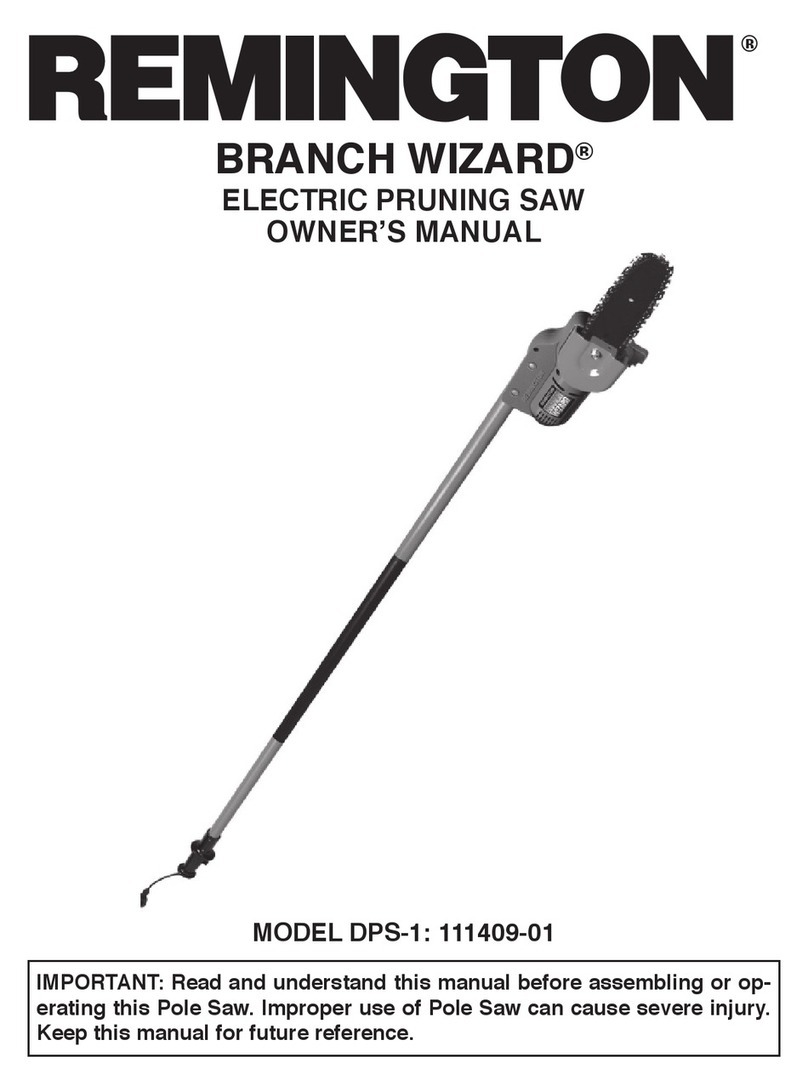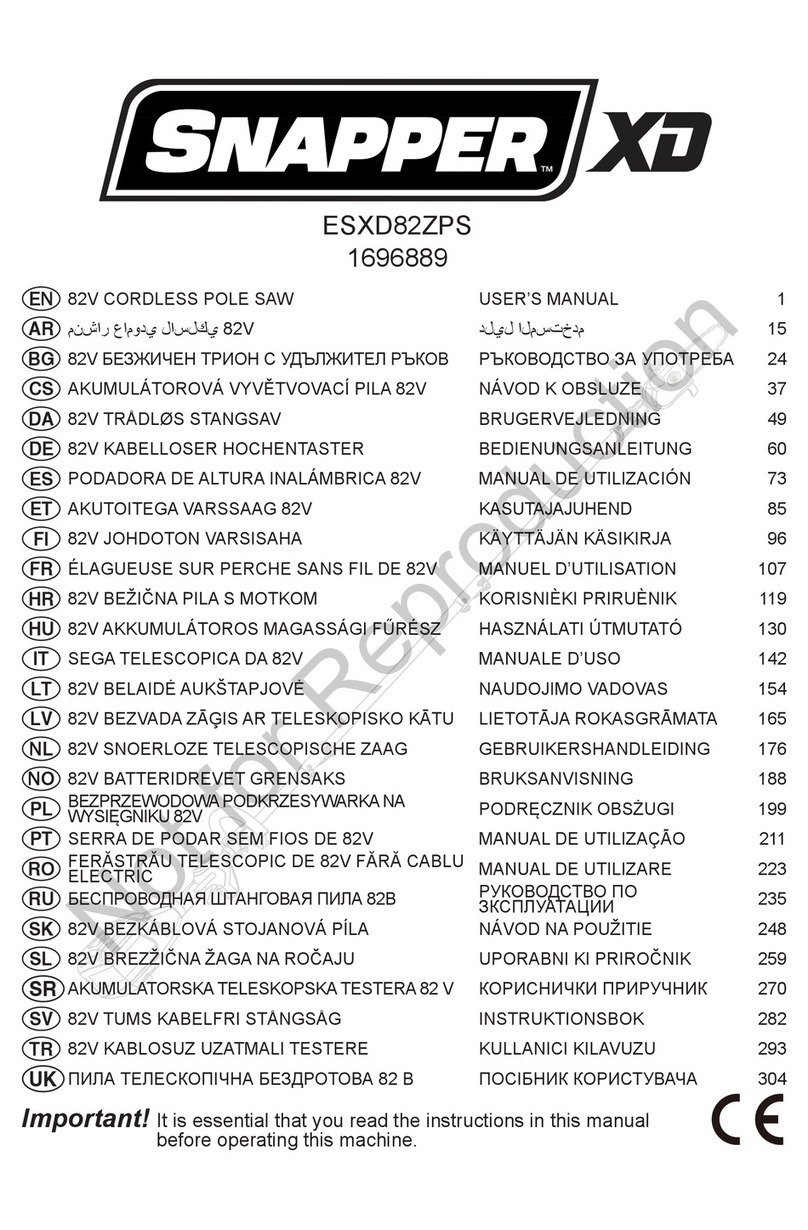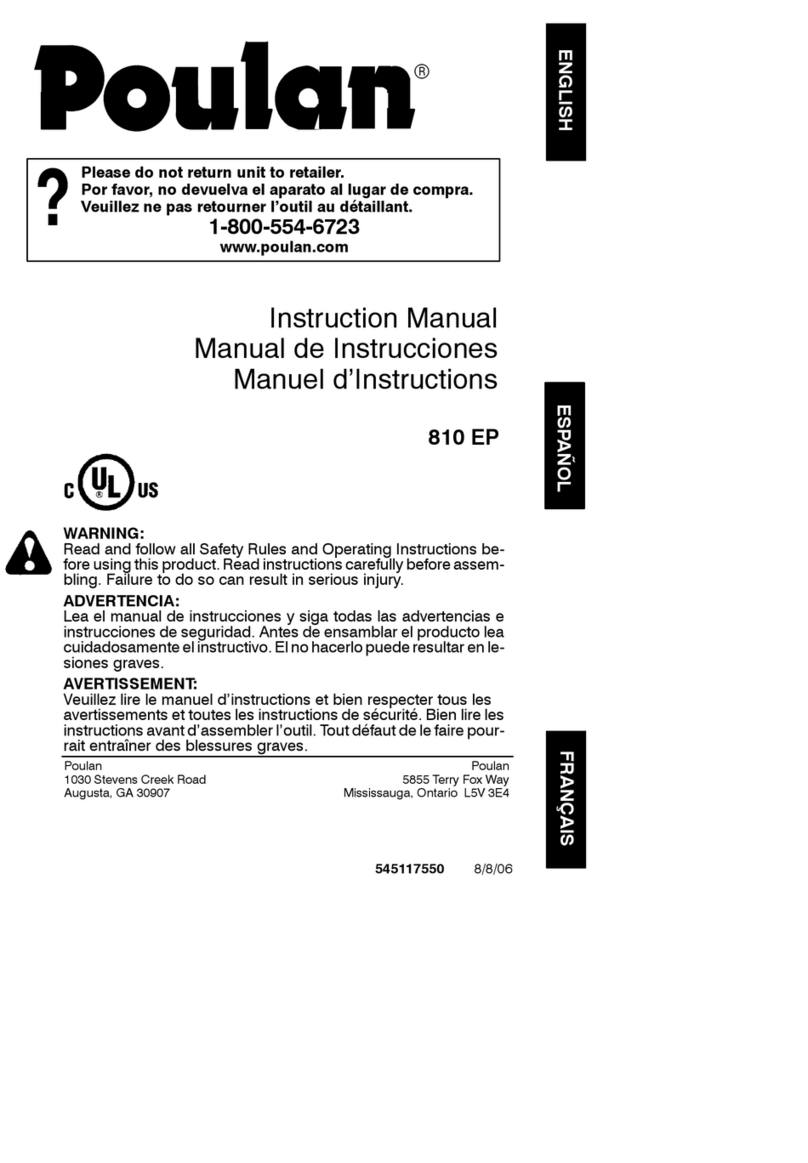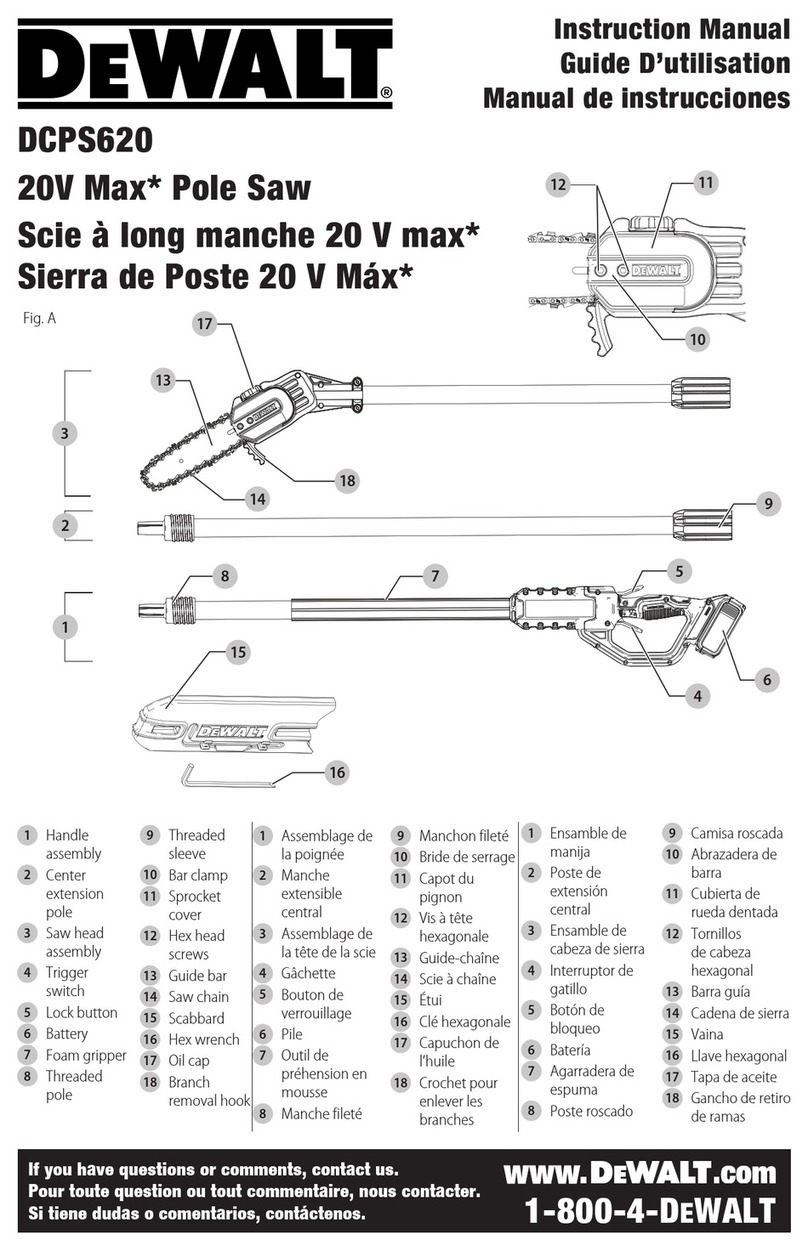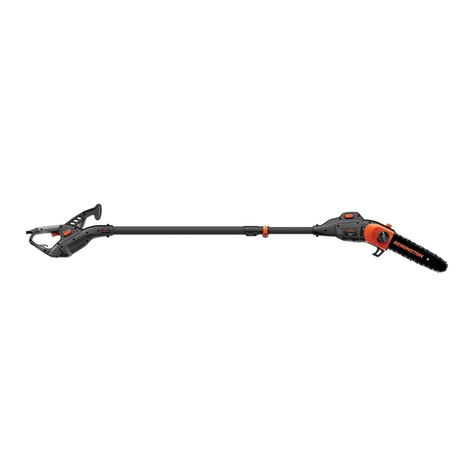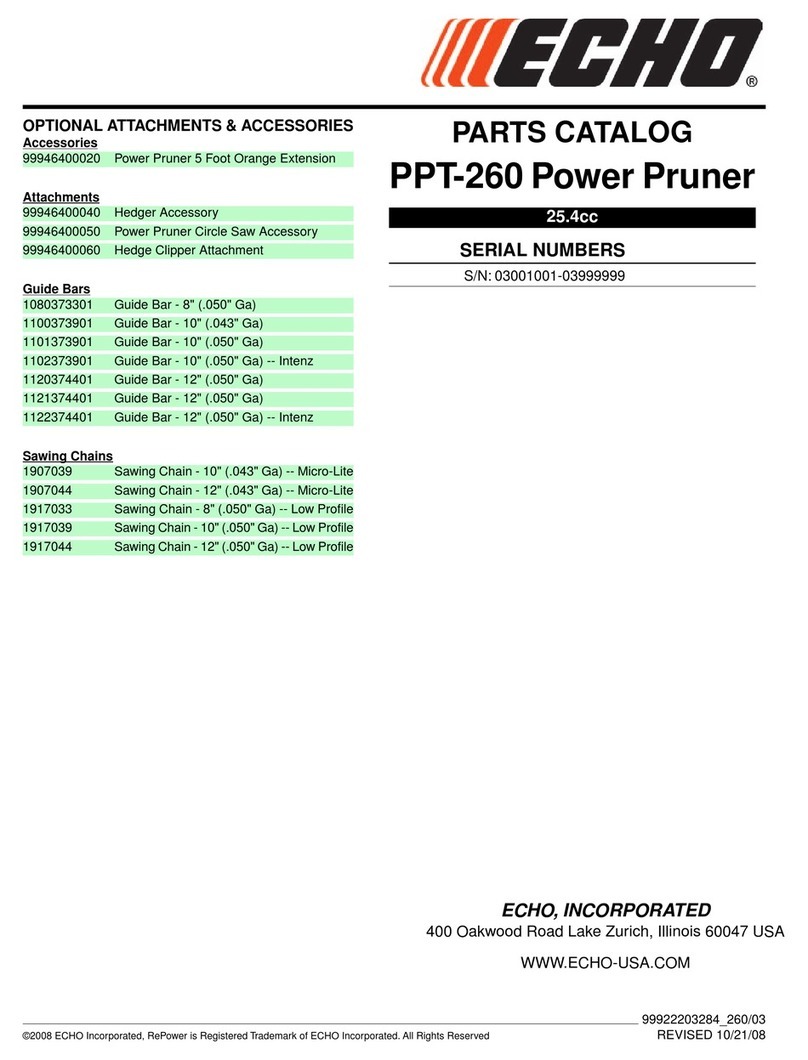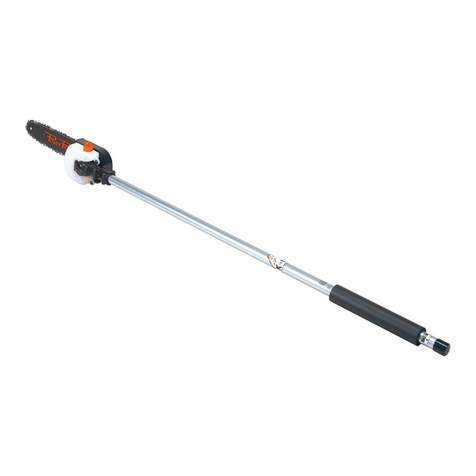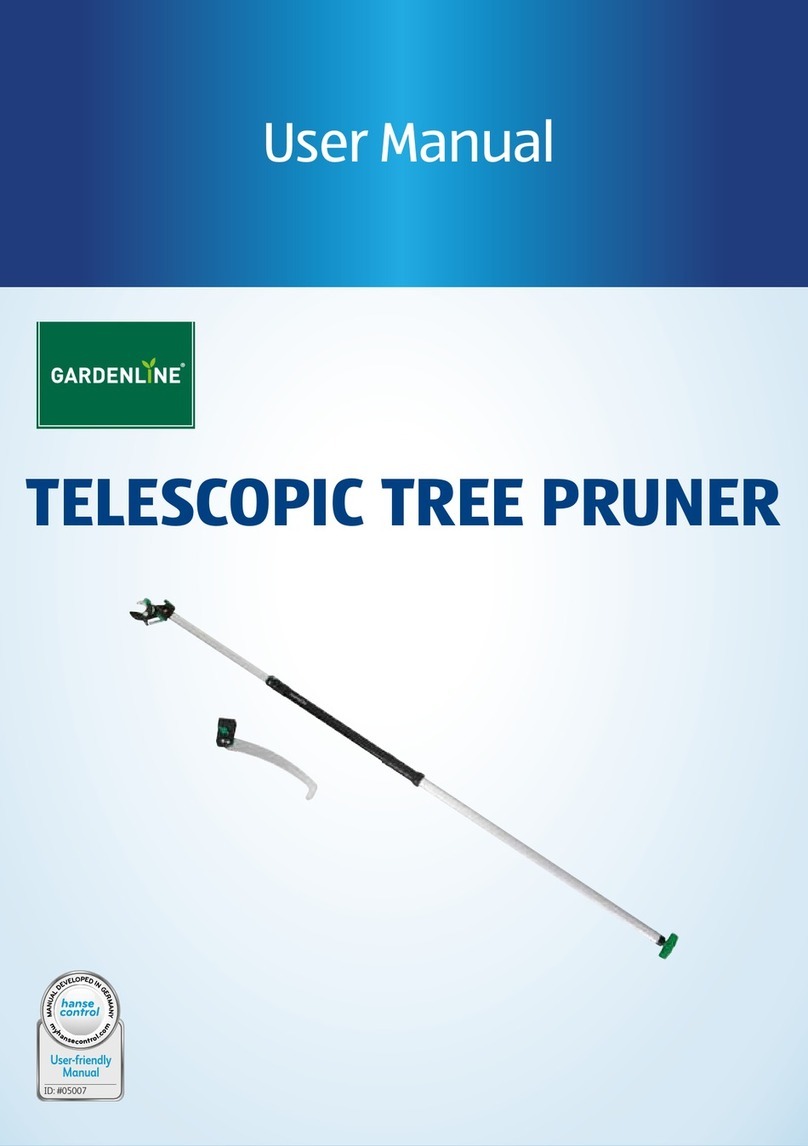
3
SAFETY INFORMATION
Save all warnings and instructions for future reference.
The term “power tool” in all of the warnings listed below refers to your mains-operated (corded) power tool or battery-
operated (cordless) power tool.
GENERAL SAFETY RULES
• Avoid Dangerous Environment – Don’t use appliances in damp or wet locations.
• Don’t Use In Rain.
• Keep Children Away – All visitors should be kept at a distance from work area.
• Dress Properly – Do not wear loose clothing or jewelry. They can be caught in moving parts. Use of rubber gloves and
substantial footwear is recommended when working outdoors. Wear protective hair covering to contain long hair.
• Use Safety Glasses – Always use face or dust mask if operation is dusty.
• Use Right Appliance – Do not use appliance for any job except that for which it is intended.
• Don’t grasp the exposed cutting blades or cutting edges when picking up or holding the appliance. (For grass shears and
similar appliances only.)
• Don’t Force Appliance – It will do the job better and with less likelihood of a risk of injury at the rate for which it was
designed.
• Don’t Overreach – Keep proper footing and balance at all times.
• Stay Alert – Watch what you are doing. Use common sense. Do not operate appliance when you are tired.
• Disconnect Appliance – Disconnect the appliance from the power supply when not in use, before servicing, when
changing accessories such as blades, and the like.
• Store Idle Appliances Indoors – When not in use, appliances should be stored indoors in dry, and high or locked-up place
– out of reach of children.
• Maintain Appliance With Care – Keep cutting edge sharp and clean for best performance and to reduce the risk of injury.
Follow instructions for lubricating and changing accessories. Inspect appliance cord periodically, and if damaged, have it
repaired by an authorized service facility. Inspect extension cords periodically and replace if damaged. Keep handles dry,
clean, and free from oil and grease.
• Check Damaged Parts – Before further use of the appliance, a guard or other part that is damaged should be carefully
checked to determine that it will operate properly and perform its intended function. Check for alignment of moving parts,
binding of moving parts, breakage of parts, mounting, and any other condition that may affect its operation. A guard or
other part that is damaged should be properly repaired or replaced by an authorized service center unless indicated
elsewhere in this manual.
POLE SAW SAFETY RULES
• Keep all parts of the body away from the saw chain. Do not remove cut material or hold material to be cut when blades
are moving. Make sure the switch is off when clearing jammed material. Saw chain continues to move after the switch is
turned off. A moment of inattention while operating the pole saw may result in serious personal injury.
• Carry the pole saw by the handle with the saw chain stopped. When transporting or storing the pole saw, always t the
saw chain device cover. Proper handling of the pole saw will reduce possible personal injury from the saw chain.
• Hold the pole saw by insulated gripping surfaces only, because the saw chain may contact hidden wiring or its own cord.
A saw chain contacting a ²live² wire may make exposed metal parts of the pole saw ²live² and could give the operator an
electric shock.
• Keep cable away from cutting area. During operation the cable may be hidden in shrubs and can be accidentally cut by
the saw chain.
• Do not use the pole saw in bad weather conditions, especially when there is a risk of lightning. This decreases the risk of
being struck by lightning.
• To reduce the risk of electrocution, never use near any electrical power lines. Contact with or use near power lines may
cause serious injury or electric shock resulting in death.
• Always use two hands when operating the pole saw. Hold the pole saw with both hands to avoid loss of control.



